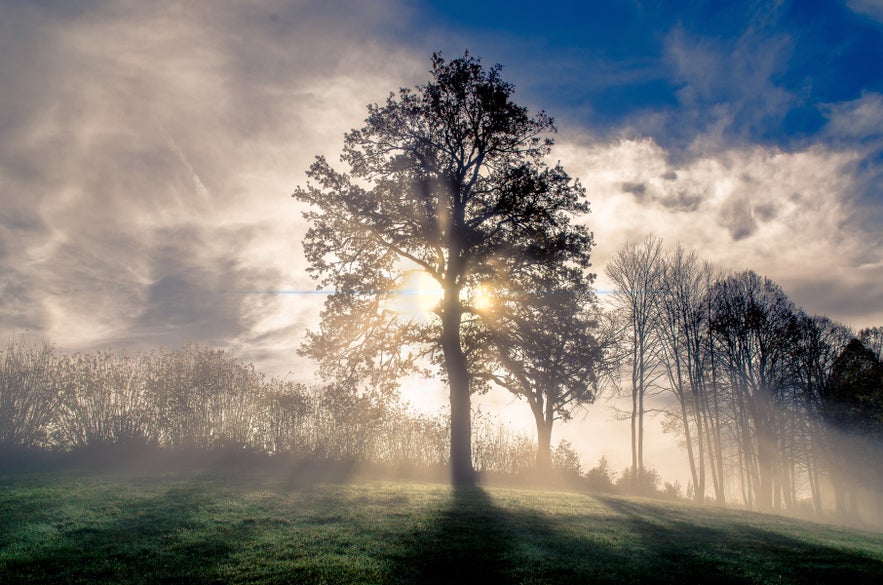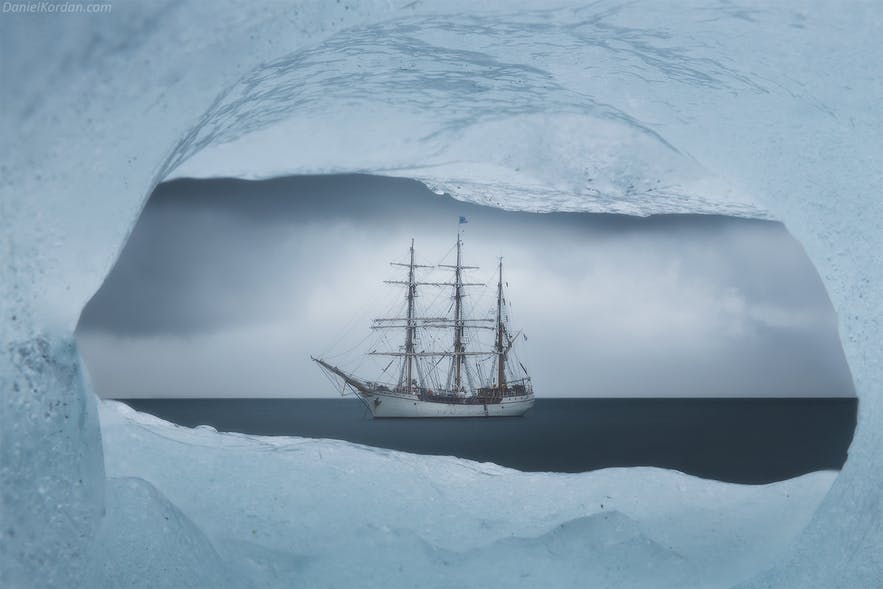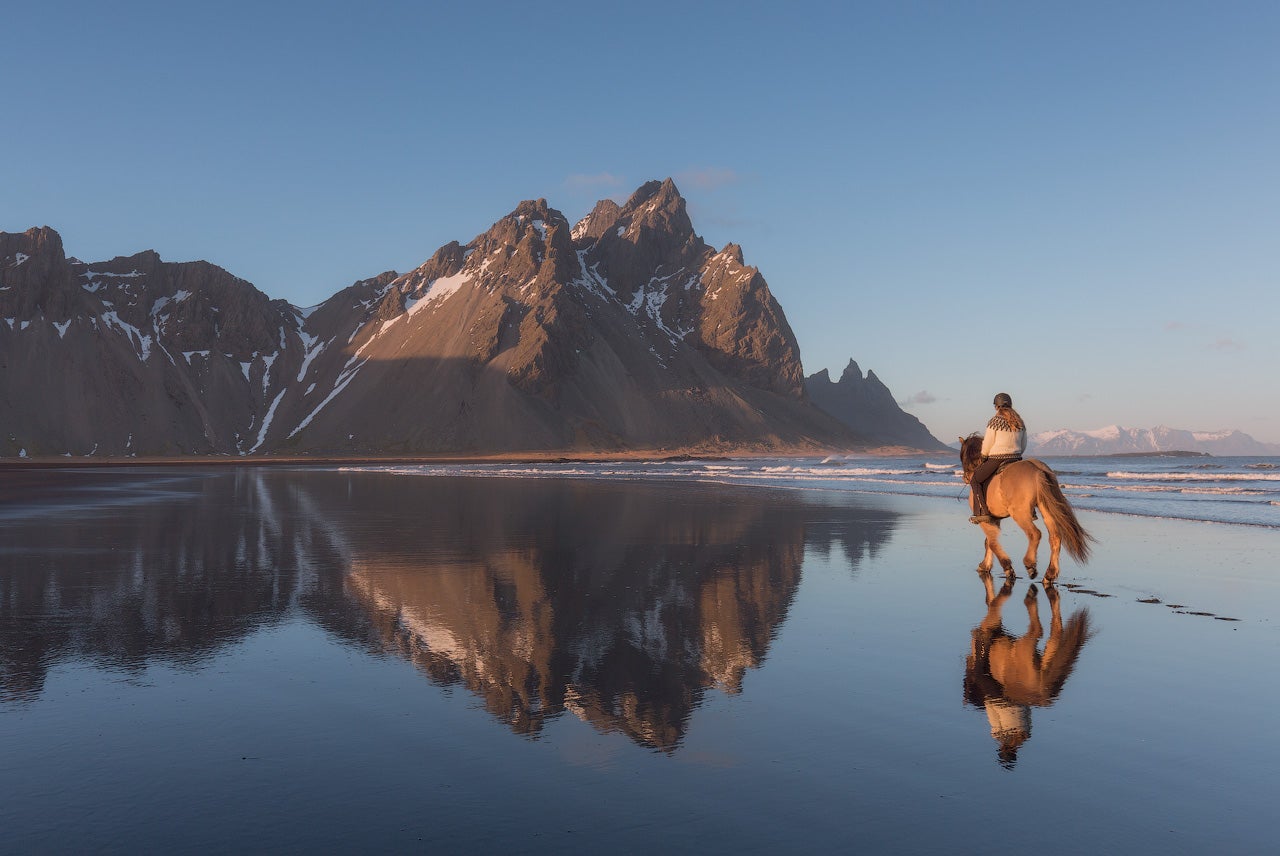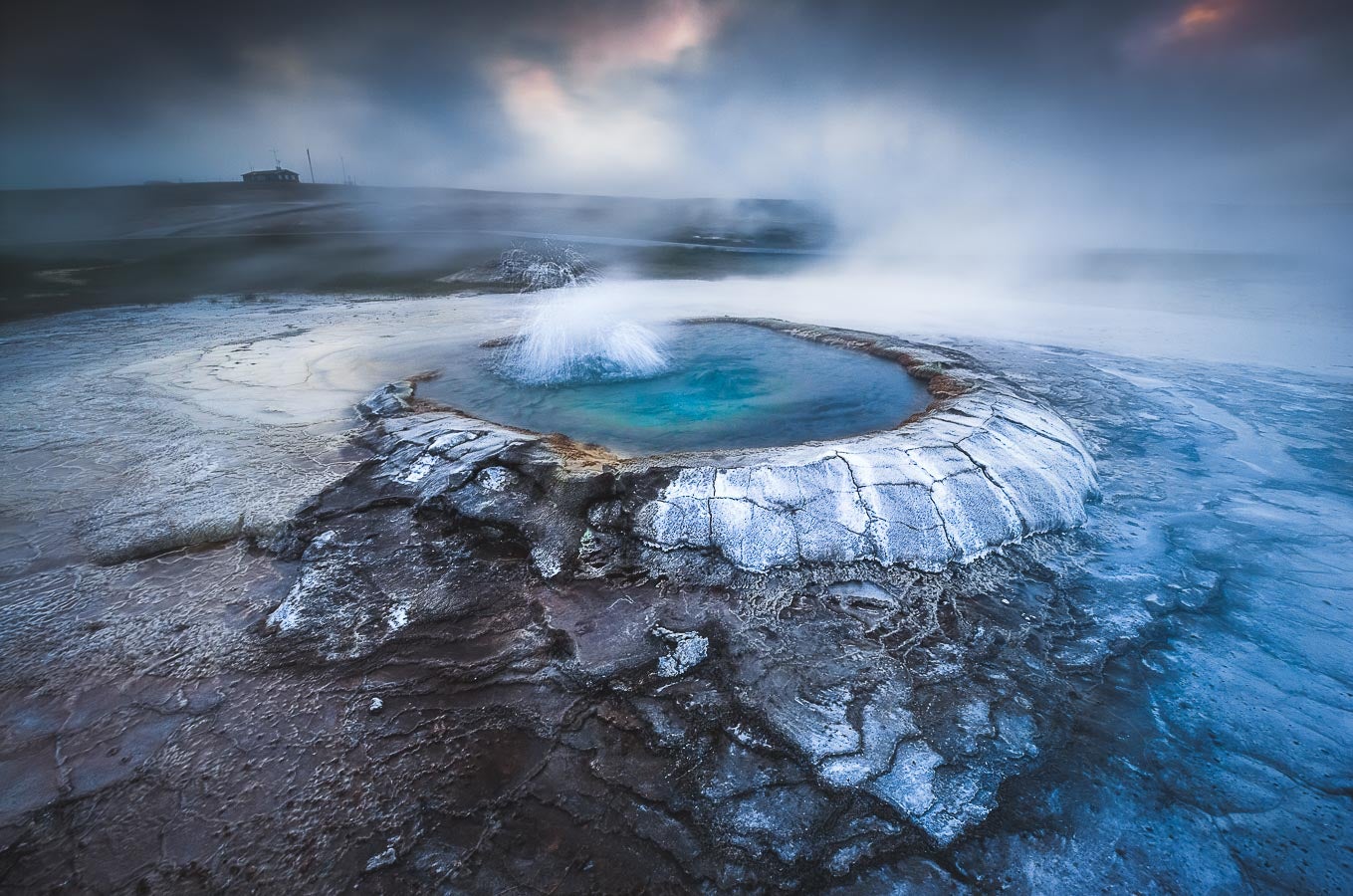
There is something to be said for getting up early enough to catch the sunrise. The moment when the sun appears on the horizon, casting the first light of morning across the landscape can make for glorious photographs, characterised by unique atmospheric effects.
- Check out these articles on Photography Techniques
- See these 11 Tips to Help You Capture Stunning Landscape Photographs
While many photographers agree that sunrise photography can yield stunning results, doing it well can be tricky and mastering the technique can take a little practice. If you’ve been wondering how to photograph sunrises, then this is the perfect guide for you. Read on to learn which settings to use as well as our tried and tested tips to help you capture beautiful sunrise images.
What is the Difference Between Sunrise and Sunset?
You may be confused as to why we’ve chosen to focus specifically on sunrise photography rather than making a combined article about shooting both sunrise and sunset. While the two may seem like mirror-image events on either side of the day, there are a couple of variances which set them apart.
 Photographing the sunrise is quite different from photographing at sunset. Photo by: 'Pxhere'.
Photographing the sunrise is quite different from photographing at sunset. Photo by: 'Pxhere'.
First of all, as the air warms up throughout the day, it begins to hold more moisture. Adding to this, unless you are in the middle of nowhere, pollutants such as dust and smog will build throughout the day, increasing the number of molecules and small particles already floating around in our environment. As the sun sets, these particles change the direction of the sun’s rays by reflecting, absorbing and scattering light throughout a larger part of the atmosphere. The result is that you may see a great array of colours appearing to be dispersed in a haze all across the sky during sunset.
As the wind settles overnight and human activities wane, the air clears and as such, the sunrise may appear to have more clarity, with deeper hues that tend to be more concentrated around the sun rather than being spread throughout the sky. These differences in the atmosphere mean that a sunrise can look completely different to a sunset, which can and does have implications for your photography.
 There are differences between sunrise and sunset that will have implications for your photography. Photo by: 'Pxhere'.
There are differences between sunrise and sunset that will have implications for your photography. Photo by: 'Pxhere'.
Aside from the air and the light, you will also notice that there may be fewer people around during sunrise than in the afternoon or evening. After all, most people prefer to sleep in during the mornings, while they’ll probably most likely already be out and about when it comes to sunset. This means that you may have a more relaxed shoot during sunrise or even better access to locations with more interesting compositions at your fingertips.
How to Take Better Pictures at Sunrise
Sunrise photography can be a bit hit and miss, so knowing exactly what camera gear you’ll need to have on-hand for the job and how to use it will certainly be to your advantage. It doesn’t just end there though because the trick to capturing spectacular sunrise images extends to planning your shoot ahead of time and understanding what you can do in-field to improve your chances of success. Let’s take a look at how you can start to take better pictures at sunrise, from the equipment that you’ll need to the best settings for your camera and how you can prepare in advance for a fruitful sunrise photography session.
 Sunrise photography isn't difficult once you know what you need and what to do. Photo by: 'Pxhere'.
Sunrise photography isn't difficult once you know what you need and what to do. Photo by: 'Pxhere'.
Essential Camera Gear for Shooting Sunrises
Wide Angle Lens
A wide angle lens such as a 16-35mm is a great option for sunrise photography. The large field of view will allow you to capture the expanse of the sky in tandem with the landscape, which can be particularly useful if you use it creatively. Due to the intrinsic distortion effect of wide and ultra-wide angle lenses, you can get down low and close to the ground, tilting the lens to make your subject appear to be larger. This can provide some foreground interest to balance the sunrise colours in the sky.
Mid-Range or Telephoto Zoom Lens
Once the sun has risen in the sky, you can still make use of the soft early morning light to capture details and abstract images in the environment around you. Packing a mid-range zoom lens such as a 24-70mm, or a telephoto lens in the range of 70-200mm, will allow you to maximise your opportunity for capturing a diverse range of sunrise shots.
Graduated Neutral Density Filters
During sunrise, there can be a lot of contrast in the landscape and the sky, which can lead to over or underexposed images. To help you expose correctly, bring along a set of graduated neutral density filters (GND). A 3-stop soft-edge GND is a good place to start. Depending on how bright the light is, you may even need a 4-stop or to stack the two filters to ensure a balanced exposure across the foreground and background.
Tripod
Shooting at sunrise often means that you’ll be starting out in dark or low-light conditions. In these circumstances, a tripod can provide your camera with some much-needed stability to ensure that you’ll end up with sharp and usable images.
While setting up a tripod can take time and slow you down in the mornings, particularly if you need to hike to your sunrise photography location, the pay-off will be worth it as you’ll have a steady base from which you’ll be able to perform long exposure and HDR techniques. Having your camera mounted to a tripod will also mean that you’ll be able to shoot within lower ISO ranges, meaning that you’ll end up with images that have far less noise than if you were to shoot handheld at a higher ISO.
Memory Cards
It can be a photographer’s worst nightmare to head out on a shoot and to make it all the way to their destination before realising that they’ve forgotten one of the most important pieces of equipment: the memory card.
Rather than just packing one, bring a few memory cards along to make sure that you won’t run out of space when you’re attempting to record the perfect moment during sunrise. This also means that if one fails, you’ll still have a number of back-ups in your pocket to save the day.
Batteries
Sunrise photography often begins when it’s dark and you may end up taking quite a few longer exposures. Added to this, cooler temperatures in the early morning can drain your camera battery much faster than when shooting during the day. To avoid running out of battery power when the sky is ablaze with the glorious colours of sunrise, pack a few extra batteries into your camera bag. You can also prolong your battery life in cold conditions by keeping them in a warm place close to your body, such as an inner-pocket of your jacket.
Headlamp
A headlamp is one thing that will really make your sunrise photography session all the more easier. If you’re planning on heading out while it’s still dark, then you’ll definitely need a headlamp or some other form of light to be able to see where you are going, as well as to set up your camera gear.
- See also: The Best Camera Bags for 2020
Best Settings for Sunrise Photography
As we mentioned earlier, the majority of sunrise photography takes place in low-light conditions. When the sun moves above the horizon and into the sky, the light will change rapidly with a wide dynamic range. This means that you won’t be able to keep your camera settings stagnant; rather, you’ll have to adjust the settings throughout the shoot to ensure that you’ll end up with well-balanced exposures. However, there are still a few basic settings which you can start tweaking before you really get into the midst of things.
 While your settings will change throughout your sunrise shoot, there are some settings that you can dial in ahead of time. Photo by: 'Pxhere'.
While your settings will change throughout your sunrise shoot, there are some settings that you can dial in ahead of time. Photo by: 'Pxhere'.
RAW vs JPEG
If all you want to do is to take a few snaps without editing them later, then set your camera to record in JPEG. This is a compressed file format in which the camera applies automatic adjustments such as contrast and saturation to produce a ready-to-use image. While you’ll have sunrise photos ready to upload to your social media and to share with family and friends almost instantly, there are some disadvantages to shooting in JPEG. This includes lower file and image quality, which can affect your ability to produce printed images.
For better image quality and to have total control over the editing process, set your camera to record in RAW. This file format means that your camera will record all of the data within the scene, so that you can apply your own adjustments with post-processing software later on. This may mean that you’ll have to spend a lot more time working on your images, though you’ll more than likely end up with better sunrise photos that you will be happy with.
Manual Focus
Sometimes when shooting in low-light conditions, you may have difficulty with the autofocus function of your lens. Rather than listening helplessly to the whirring sounds as your camera attempts to focus the lens, consider switching to manual focus instead.
 Focusing manually is more accurate in low-light conditions such as sunrise. Photo by: 'Pxhere'.
Focusing manually is more accurate in low-light conditions such as sunrise. Photo by: 'Pxhere'.
Manually setting the focus for sunrise photography isn’t all that difficult to do once you get the hang of it. Simply make sure that both your lens and the camera are in manual focus mode. Next, turn on the Live View function on your camera. This will allow you to see the scene on the LCD screen as you would through the viewfinder. You can then use the magnifying tools to zoom in on your subject and rotate the focus ring of your lens until you’re happy with the results. Take a picture and review the image to ensure that it is sharp. If not, re-adjust the focus ring and repeat until you’ve got your subject in-focus.
If you’re unsure where to focus, then choose a focal point within the bottom third of your frame, preferably your subject in the foreground of the image. If you will be shooting the sunrise straight out to sea on the horizon with nothing else in the frame, then focus on the reflections or ripples of water that are closest to you.
 When taking close-up or abstract images, focus on the details. Photo by: 'Pxhere'.
When taking close-up or abstract images, focus on the details. Photo by: 'Pxhere'.
Balance the Exposure Triangle
Knowing how the exposure triangle works is vital to capturing great sunrise images. Here is some in-depth information about what the exposure triangle is as well as how these elements interact with one another to help you produce a balanced exposure. Assuming that you already have a basic understanding of the exposure triangle, let’s take a look at what you’ll need to know in relation to the ISO, aperture and shutter speed settings for sunrise photography.
Shooting in the Blue Hour Before Sunrise
The ‘blue hour’ is a moment of twilight that occurs when the sun remains below the horizon but its light indirectly tinges the sky in a beautiful, diffused shade of blue. It tends to happen around 30 minutes before sunrise and is one of the best times to capture stunning images of cityscapes, landscapes and seascapes.
Due to the extremely low-light conditions during this part of the sunrise, it’s best to mount your camera to a tripod and to take a series of shots with longer exposures. You’ll likely need to raise your ISO so that you can maintain an appropriate aperture and shutter speed when shooting, anywhere between ISO 100 to 400. Try starting with an aperture of around f/4 to f/8. To achieve a shutter speed of between 2 to 10 seconds, you’ll likely need to experiment with your ISO settings, so start at ISO 100 and go from there.
 Shooting at blue hour requires using a higher ISO and slower shutter speed. Photo by: 'Pxhere'.
Shooting at blue hour requires using a higher ISO and slower shutter speed. Photo by: 'Pxhere'.
- See also: Ultimate Guide to Blue Hour Photography
Shooting at Sunrise
During sunrise, you’ll have a wider dynamic range to deal with as the light becomes brighter, casting shadows in the scene. At this time, you’ll need to lower your ISO down to 100. The increased amount of ambient light will mean that you can close your aperture to around f/8 to f/11 for better depth of field.
Unless you are planning to take longer exposures, your shutter speed should be relatively fast, between 1/15th to 1/125th of a second. During this time, you may find GND filters to be useful to help you balance the exposure between the foreground and the sky.
 Sunrise is the moment that the sun hits the horizon and begins to rise. Photo by: 'Pxhere'.
Sunrise is the moment that the sun hits the horizon and begins to rise. Photo by: 'Pxhere'.
Shooting in the Golden Hour after Sunrise
Once the sun has risen above the horizon, you’ll have a period of time known as the ‘golden hour’ during which the sky will remain lit up with hues of red, orange and gold. The lighting during this time tends to be a bit softer than at actual sunrise, with fewer shadows. Keep shooting with ISO 100 and a closed aperture. The amount of light in the sky will mean that you’ll most likely have to use GND filters to balance the exposure, while neutral density filters will be useful for achieving long exposure effects.
 The golden hour occurs after sunrise and is a beautiful time for photography. Photo by: 'Pxhere'.
The golden hour occurs after sunrise and is a beautiful time for photography. Photo by: 'Pxhere'.
When reviewing your images as you're shooting the sunrise, don’t rely completely on what you see on the back of your camera. Your eyes will be adjusted to the low-light conditions, which may mean that you will perceive the brightness of the image on the LCD screen quite differently to how it will look when you see it on your computer. Instead, check the histogram to ensure that there is no clipping in the shadows or the highlights.
Sunrise Photography Tips
Now that you’ve got the lowdown on what camera gear and settings to use, it’s time to take a look at our tips to help you achieve successful sunrise images.
Tip #1. How to Predict a Nice Sunrise
The trick to predicting a nice sunrise is to use all the available tools that you have at your disposal before you head out for your sunrise shoot. In general, it’s a good idea to check the weather forecast, so make sure to download a good weather app such as Fotocast. You can also check your local meteorology websites for information on sunrise times and weather conditions. While clear skies can be lovely, it’s always best to have some clouds around, as they will catch the light when the sun begins to rise. Fog and mist can also make for some great sunrise photography conditions.
 The nicest sunrises tend to happen when you're on your way to work, unless you plan ahead for a day off! Photo by: 'Pxhere'.
The nicest sunrises tend to happen when you're on your way to work, unless you plan ahead for a day off! Photo by: 'Pxhere'.
- See also: How to Take Great Photos in Bad Weather
Tip #2. Plan the Location
Knowing where the sun will rise in relation to where you want to shoot will help you immensely in terms of capturing the image that you may have pre-visualised. Depending on where they are, some locations just aren’t made for sunrises, with the direction of the light not being conducive to sunrise photography.
The PhotoPills app is a great tool to help you plan when and where to go for sunrise photography. It’s a tool that every photographer should have and will help you to investigate potential outcomes for future sunrise shoots. SunCalc is another good asset for photographers, which will show you the movement and phases of the sun on any given day for your shooting location.
Other useful websites and apps include Tides Near Me if you're planning to do a sunrise shoot by the sea, as well as The Photographer's Transit for working out which camera and lens combination will best suit photography at a particular location.
Tip #3. Arrive Early
Photographing the sunrise isn’t just about capturing the moment that the sun starts moving above the horizon. Oftentimes, the colours begin around blue hour before sunrise. To ensure that you’ll get the shot that you want, it pays to arrive early so that you can scout for compositions ahead of time. That way, you’ll be ready to take the shot once the sunrise begins.
 Arriving early to your location will guarantee you a spot and also allow you to scout for compositions. Photo by: 'Pxhere'.
Arriving early to your location will guarantee you a spot and also allow you to scout for compositions. Photo by: 'Pxhere'.
Getting to the location early will also mean that you'll be guaranteed a spot when the sunrise show begins, especially when you're planning to shoot somewhere famous such as the Golden Gate Bridge in San Francisco. While we mentioned that most people will tend to sleep in during the mornings, photographers who truly don't want to miss the shot will still be up and about!
Tip #4. Shoot Into the Sun
Shooting into the sun when it begins rising above the horizon can result in a magnificent ‘starburst’ effect, which can give your shots a more interesting dynamic. The trick to capturing this moment is to use a closed aperture of around f/16 to f/22 and to make sure that the sun is partially obscured, either by the horizon or another object.
If you have GND filters attached to your lens, make sure that they’re extremely clean or remove them completely – any dust or smudges can lead to unwanted lens flares which can ruin the starburst.
Tip #5. Bracket Your Images
In some cases, it may be a good idea to bracket your images during sunrise, particularly if you decide not to use any filters. The lighting conditions during sunrise may be too difficult for your camera's automatic light meter to produce a balanced exposure.
Bracketing means that you’ll take a number of shots – one using the camera's recommended settings, one exposing for the highlights and one exposing for the shadows within the scene. When combined with post-processing software, these shots can yield a single well-exposed image that reflects the entire dynamic range. It’s a very useful technique for when the sun is incredibly bright on the horizon but there are still dark shadows in the foreground. You can either choose to do this manually or to utilise the auto exposure bracketing function which is available on most DSLRs.
- See also: Ultimate Guide to HDR Photography
Tip #6. Shoot Away From the Sun
Oftentimes as photographers, we can get so dazzled by the sunrise that we take photos directly into it, rather than looking around. However, it can pay to shoot away from the sun, particularly if the sunrise colours are in the opposite direction in the sky.
Shooting away from the sun also means that the direction of the light will minimise shadows in the foreground, so you won’t have to compensate for shooting into a bright ball of light.
 Shooting away from the sun can result in softer light with fewer shadows. Photo by: 'Pxhere'.
Shooting away from the sun can result in softer light with fewer shadows. Photo by: 'Pxhere'.
Tip #7. Don’t Leave Early!
Last but not least, when photographing the sunrise, it’s important that you stay long enough to capture the colours in the sky. Some photographers make the mistake of leaving the shoot too early, thinking that the sun has moved above the horizon and that the colours of the sunrise won’t appear. Even when it may seem like the sunrise is a flop, the colours can appear during the golden hour and last until the sun is high up in the sky. So to maximise your chances of capturing stunning sunrise images, head out early and stay out late!
About the author: Serena Dzenis is a landscape photographer based in Iceland. You can find more of her work on her website or by following her on Facebook and Instagram.
Have you got any other tips for sunrise photography? What was your most memorable sunrise shoot? Leave a comment below!












